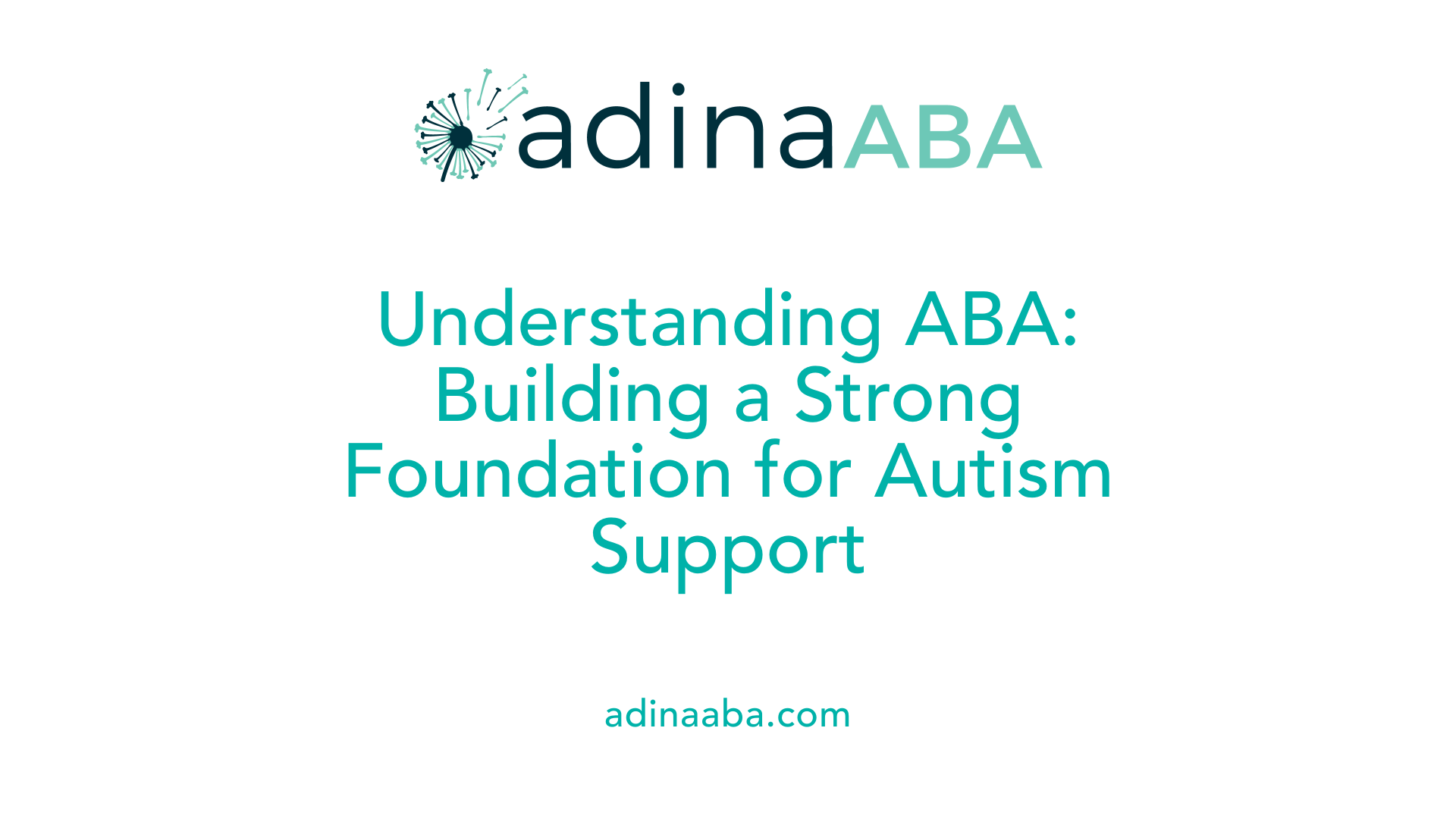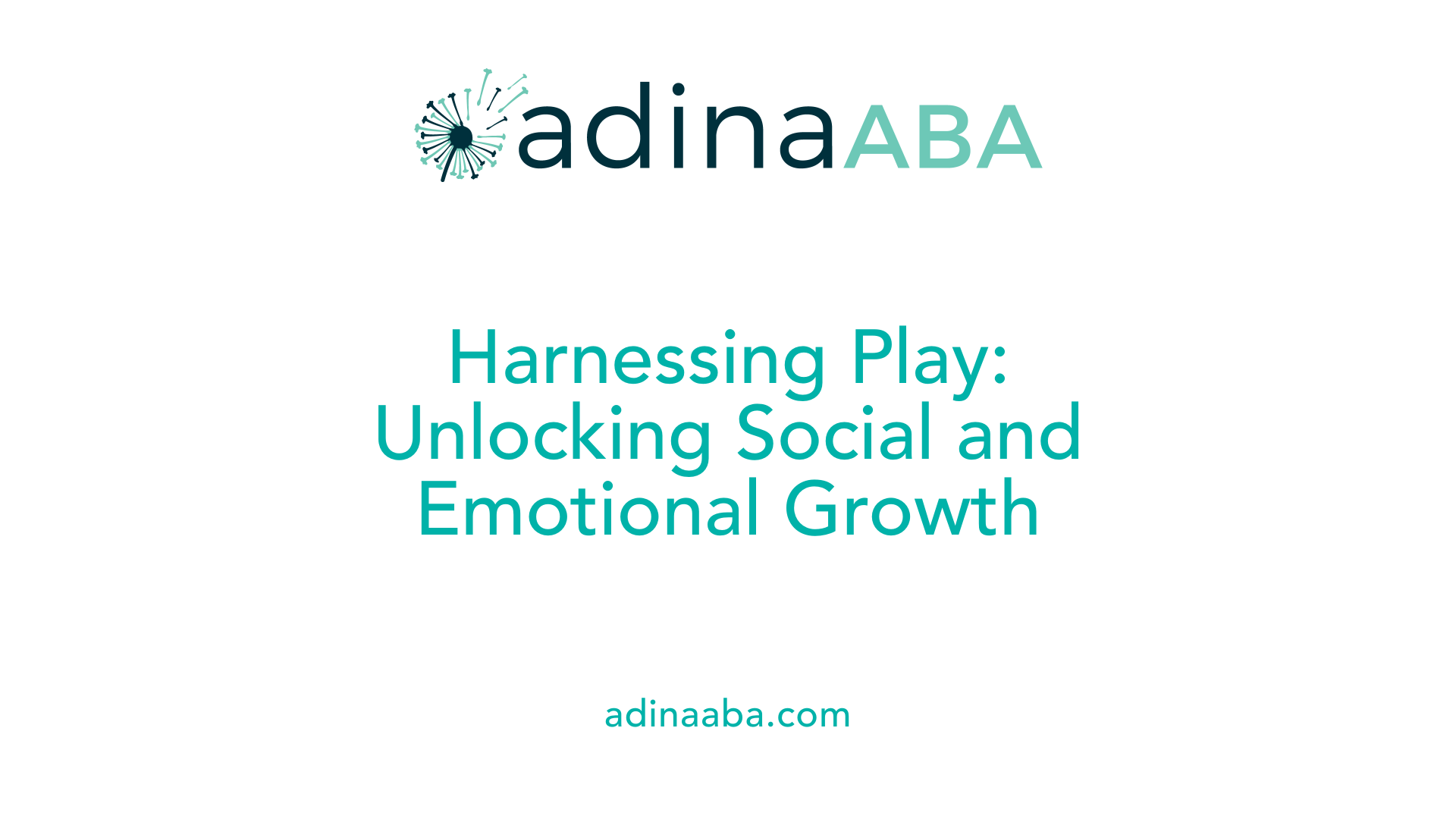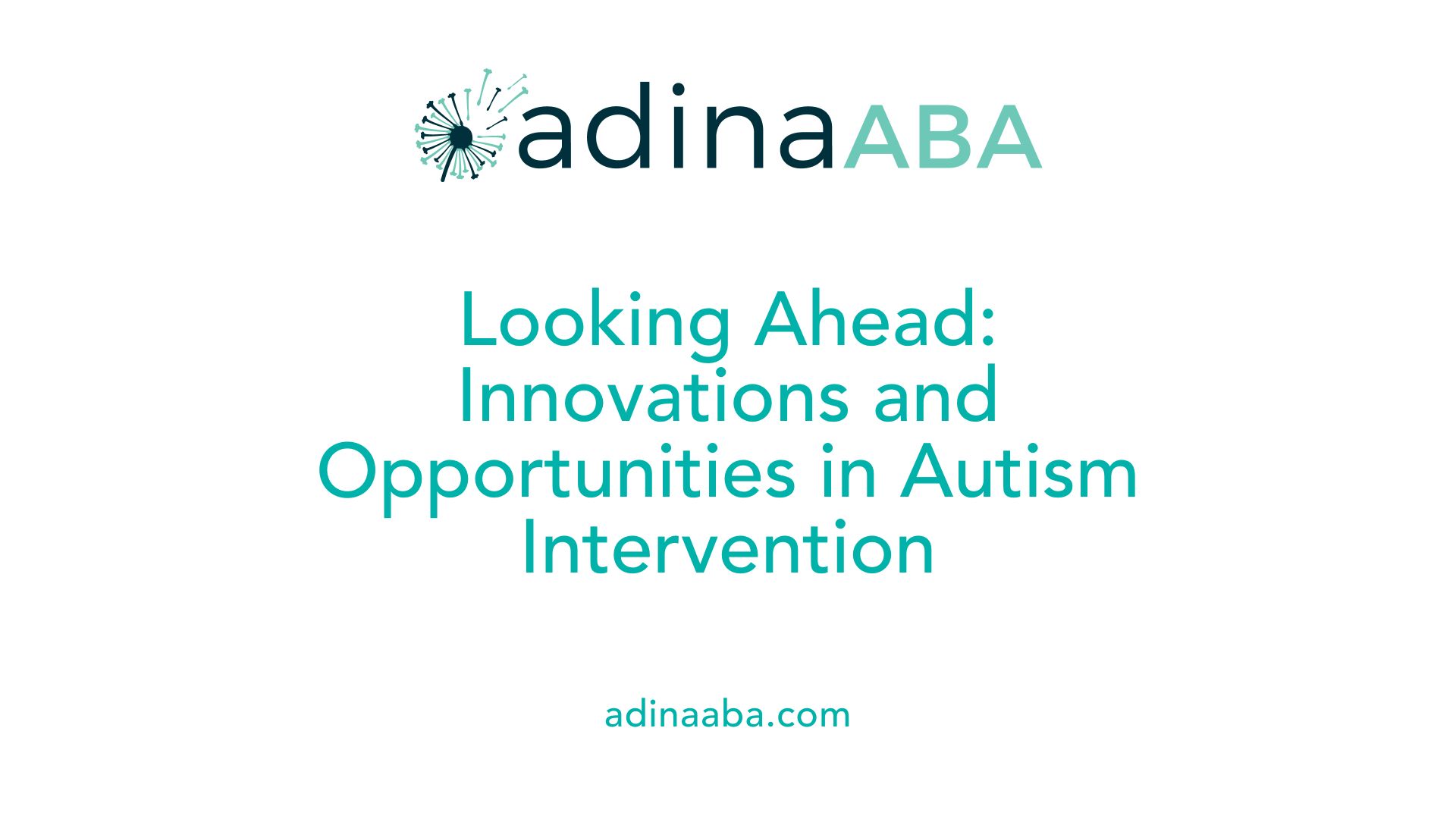Helping Children with Autism Develop Healthy Play and Interaction Skills through ABA Therapy

Understanding the Power of ABA in Early Childhood Development
Applied Behavior Analysis (ABA) is a scientifically supported approach widely recognized for its effectiveness in enhancing a broad spectrum of skills necessary for children with autism. Focused on positive behavioral changes, ABA therapy helps children develop critical communication, social interaction, and daily living skills through structured, individualized interventions. This article explores how ABA therapy promotes healthy play, fosters social engagement, and supports behavioral growth, ultimately improving quality of life and long-term independence for children with autism.
The Foundations and Framework of ABA Therapy

Does ABA therapy help improve a wide range of skills in children with autism?
Yes, ABA therapy is highly effective at helping children with autism develop a broad spectrum of skills. It focuses on improving areas such as communication, social interaction, emotional regulation, and daily living skills.
This therapy employs structured, personalized interventions that are designed around each child's strengths and needs. Central techniques include positive reinforcement—rewarding desired behaviors to encourage repetition—and analyzing natural interactions through antecedent-behavior-consequence (ABC) analysis. These methods foster the acquisition of new skills in a supportive, engaging environment.
ABA therapy aims not only to teach specific behaviors but also to promote generalization of skills across different settings. It supports children of various ages and severity levels, making early intervention especially beneficial. Parents and caregivers are integral to the process, as consistent practice at home enhances the therapy's long-term success.
Research underscores that early, intensive ABA intervention—typically 25 to 40 hours per week for 1 to 3 years—can lead to substantial improvements. Children often gain greater independence, confidence, and social abilities, which positively influence academic performance and peer relationships. In essence, ABA creates a foundation for lifelong skills and promotes positive developmental trajectories.
In addition to ABA, early speech therapy also plays a crucial role in fostering language skills. Combining these approaches offers a comprehensive strategy for supporting children with autism. Overall, ABA therapy is a scientifically supported approach that helps children reach their full potential through targeted, evidence-based methods.
Techniques and Strategies in ABA for Skill Acquisition
What techniques are used in ABA therapy to promote healthy play and social development in children with autism?
ABA therapy incorporates a range of effective methods to foster social and play skills among children with autism. Central to these approaches are structured techniques like Discrete Trial Training (DTT), which involves breaking down skills into small, manageable steps and delivering repeated, clear instructions to teach specific behaviors.
Alongside DTT, Natural Environment Teaching (NET) plays a crucial role. This approach integrates learning into everyday routines, encouraging the child to apply new skills in natural settings, making the learning process more meaningful and engaging.
Positive reinforcement is widely used in ABA to motivate children. By providing praise, preferred activities, or tangible rewards when a desired behavior occurs, therapists encourage its repetition. Prompting, which involves guiding the child towards the correct behavior, and systematic fading of prompts, help children gain independence over time.
Modeling and role-playing are also essential strategies. Therapists or caregivers demonstrate appropriate social behaviors through modeling, while role-playing provides safe environments for children to practice these skills actively. Play-based strategies such as storytelling, turn-taking games, and pretend play are used so children can learn social interactions in a fun and natural way.
Sensory sensitivities are addressed with specific interventions. Desensitization techniques help children gradually become accustomed to sensory stimuli, while sensory diets and sensory-friendly environments ensure comfort and reduce sensory overload, facilitating better engagement both at home and in social settings.
These diverse, evidence-based techniques work together to promote healthier play behaviors and bolster social development, helping children with autism build meaningful relationships and participate more fully in their daily lives.
Personalized ABA Programs and Data-Driven Progress
How does initial assessment and goal setting shape ABA therapy?
An effective ABA program begins with a comprehensive initial assessment conducted by a qualified behavior analyst, such as a BCBA. This assessment identifies the child's current skills, strengths, and areas needing support. Based on this information, specific, measurable goals are established that address communication, social interactions, daily living skills, and other developmental needs. Setting clear objectives helps tailor the intervention to each child's unique profile.
Why is ongoing data collection and analysis important?
Throughout ABA therapy, continuous data collection plays a critical role. Therapists systematically record behaviors, skill acquisition, and progress toward goals. This data allows for real-time analysis of what strategies are effective and where adjustments may be needed. Frequent review of this information ensures that interventions remain aligned with the child's evolving needs, enabling timely modifications to optimize learning.
How are programs adjusted based on progress?
Based on data analysis, ABA programs are regularly refined. If a child demonstrates mastery of a skill, therapists may move to more advanced steps or new targets. Conversely, if progress stalls, the treatment plan can be adapted—perhaps by changing reinforcement methods or breaking skills into smaller steps. This iterative process maintains motivation and promotes continuous development.
How are treatment plans individualized based on strengths and needs?
Every child with autism has a unique set of strengths and challenges. BCBAs design personalized treatment plans that leverage these strengths while addressing specific deficits. For example, a child with strong visual skills might benefit from visually supported instructions, while another may need more social skills training through play. Family input is also incorporated to ensure relevance and reinforce skills at home.
Does ABA therapy help improve a wide range of skills in children with autism?
Yes, ABA therapy helps children with autism develop a broad spectrum of skills. From communication and social interaction to emotional regulation and daily living, these skills are taught through structured, personalized interventions. Techniques like positive reinforcement and the analysis of behaviors in natural settings foster lasting learning.
Research consistently shows that long-term, intensive ABA—typically 25–40 hours per week over 1-3 years—can lead to substantial gains. These include improved language, better self-care, and enhanced social skills, benefits that often extend into adulthood. Importantly, involving families and consistent practice at home enrich the effectiveness and help to generalize skills across different environments.
In summary, a well-designed ABA program, guided by careful assessment, ongoing data analysis, and personalized adjustments, offers children with autism meaningful opportunities to develop essential skills and achieve greater independence.
Evidence of Efficacy and Endorsements
Research studies consistently demonstrate the positive impact of ABA therapy on children with autism. Long-term outcomes reveal significant improvements across multiple domains, including communication, social skills, daily living activities, and intellectual development. Many children who undergo intensive ABA programs, often ranging from 25 to 40 hours per week over one to three years, show measurable progress in their abilities and independence. These benefits often extend into adulthood, fostering lifelong skills that enhance quality of life.
Endorsements from prominent health authorities further validate ABA's effectiveness. The US Surgeon General and the American Psychological Association recognize ABA as an evidence-based best practice for autism treatment. Such endorsements highlight the scientific foundation of ABA and its role in supporting optimal developmental outcomes.
As a well-established approach, ABA integrates various techniques like positive reinforcement and the analysis of antecedents, behaviors, and consequences. Its personalized nature—guided by Board Certified Behavior Analysts (BCBAs)—ensures that each child receives tailored interventions aligned with their unique strengths and needs.
Furthermore, ABA therapy is supported by insurance mandates, including private health plans and Medicaid, when prescribed as medically necessary. This widespread acceptance underscores ABA’s position as a leading, scientifically supported intervention for children with autism.
| Aspect | Details | Notes |
|---|---|---|
| Long-term outcomes | Significant improvements in skills over 1-3 years | Extends benefits into adult life |
| Major endorsements | US Surgeon General, American Psychological Association | Recognized as best practice |
| Treatment techniques | Positive reinforcement, antecedent-behavior-consequence analysis | Evidence-based methods |
| Accessibility | Insurance coverage, Medicaid | Promotes broad availability |
| Personalized plans | Designed by BCBAs to meet individual needs | Ensures effectiveness |
Overall, these robust research findings and authoritative endorsements establish ABA therapy as a highly effective intervention promoting meaningful growth for children with autism.
The Role of Play in Autism Development and Therapy

What types of play therapy are used for children with autism?
Several types of play therapy are tailored to meet the unique needs of children with autism. Child-Centered Play Therapy (CCPT) emphasizes creating a safe, expressive environment where children control the play.
Structured Play Therapy involves organized activities designed to teach specific skills, such as turn-taking or problem-solving.
ABA combined with play activities uses play as a medium to reinforce learning goals and positive behaviors, blending structured behavioral techniques with enjoyable activities.
Other approaches include DIR/Floortime, which focuses on emotional and social development through play that aligns with a child's interests, and social skills groups that use play as a platform for practicing interaction.
What are the benefits of play therapy (emotional, social, communication)?
Play therapy offers numerous advantages for children with autism. It supports emotional growth by providing a safe space to express feelings and cope with challenges.
Social development is enhanced through activities that promote interaction, sharing, and understanding social cues.
Communication skills improve as children learn to convey needs and desires more effectively during play, often in a natural, non-verbal context.
Furthermore, play therapy boosts problem-solving abilities, creative thinking, and emotional regulation, helping children manage anxiety and reduce behavioral issues.
How is play used to reinforce ABA goals?
Play serves as an effective tool to reinforce ABA objectives by making learning engaging and relevant. Therapists incorporate play activities to teach specific behaviors such as requesting items (manding), turn-taking, or social greetings.
For example, a child might play with toys that require them to practice requesting verbally or through gestures, aligning with communication goals.
Reinforcing a child's interest-based activities helps motivate participation and confidence, increasing the likelihood of skill retention.
Play-based interventions also enable therapists and parents to observe and measure progress in real-time, facilitating personalized adjustments. By integrating play, ABA therapy becomes more natural and enjoyable, encouraging lasting behavior change.
How can play therapy aid children with autism in developing behavioral and social skills?
Play therapy can significantly aid children with autism in developing behavioral and social skills by providing a safe and structured environment to explore emotions, relationships, and their surroundings.
Techniques like the Floortime approach use a child's interests to foster communication, social interaction, and relationship-building.
Engaging children in activities targeting gross motor, fine motor, and sensory regulation helps improve their physical coordination and cognitive functions.
Group activities such as singing games or scavenger hunts promote cooperation, social interaction, and teamwork skills.
Additionally, involving parents and caregivers in the therapy process enhances understanding, supports generalization of skills, and strengthens family bonds.
Using Structured Play to Develop Critical Play Skills
How can structured play activities be used to develop play skills in children with autism?
Structured play activities are an effective approach to help children with autism develop essential play skills. These activities are designed with clear, specific goals, such as learning to share, take turns, cooperate, and communicate with others. By setting defined tasks, children understand what is expected, which reduces confusion and frustration.
Visual supports play a crucial role in this process. Pictorial cues, social stories, and visual schedules help children grasp each step of an activity, making transitions smoother and supporting independent participation. For example, using picture cards to show the sequence of taking turns allows children to see what comes next.
Adapting activities to match a child's interests and strengths is vital. When activities align with a child's preferences, they are more motivated and engaged. Whether it’s building with blocks, pretend play, or cause-and-effect toys, tailoring activities makes learning more fun and effective.
Incorporating a variety of play types helps target different developmental areas. Exploratory play encourages curiosity; cause-and-effect activities teach problem-solving; pretend play fosters imagination and social understanding; and constructive play supports fine motor skills.
Adult involvement is essential. Guidance from a therapist or parent—such as modeling behaviors, prompting, and joining in—helps children learn social rules and interaction skills. Playing alongside a peer or adult introduces the concept of social engagement, gradually building their confidence in cooperative play.
Overall, using structured play tailored to each child's needs helps them develop critical play skills. It fosters social interaction, enhances communication, and promotes independent, joyful learning experiences that lay the foundation for broader social and daily living skills.
The Crucial Role of Family and Community in ABA Success

How does ABA therapy help children with autism develop social, play, and communication skills?
ABA (Applied Behavior Analysis) therapy is a proven, evidence-based treatment that focuses on improving a child's helpful behaviors and reducing interfering ones. This therapy employs methods such as positive reinforcement, Discrete Trial Teaching (DTT), and Natural Environment Teaching (NET). These techniques work by encouraging desired behaviors through rewards and structured learning opportunities.
ABA programs are highly personalized, tailored to meet each child's unique needs. They aim to enhance expressive and receptive language, foster social interaction, and improve emotional regulation. For example, children learn to understand social cues, develop friendships, and communicate more effectively. Early, intensive intervention—often 25 to 40 hours per week for one to three years—can lead to significant improvements in communication, daily living skills, and independence.
This therapy also emphasizes the importance of involving parents and caregivers. Regular assessment and ongoing adjustments ensure that skill development remains relevant and effective. By reinforcing learning across home and community settings, ABA creates a consistent environment that promotes steady growth and helps children with autism reach their full potential.
Summary and the Way Forward

Summarizing Key Points
ABA therapy is a science-backed, individualized approach that helps children with autism improve essential skills such as communication, social interaction, and daily living. It employs proven methods like positive reinforcement, structured teaching, and natural environment techniques to teach new skills and reduce interfering behaviors. Delivered by trained professionals like BCBAs and RBTs, ABA therapy can be implemented in various settings, including home and school, with the support of family and community.
Research shows that intensive, consistent ABA treatment over one to three years can lead to notable improvements in intellectual, language, and social skills. Its status as an evidence-based practice is affirmed by major health and psychological organizations, emphasizing its role in fostering independence and quality of life for individuals with autism.
Future Outlook and Ongoing Research
Looking ahead, ongoing research aims to refine ABA strategies, making interventions more engaging, accessible, and personalized. Advances in technology, such as digital tools and data collection systems, are enhancing how therapists analyze progress and adapt treatment plans. There is also a growing focus on integrating ABA with other therapies like speech and occupational therapy to maximize benefits.
Furthermore, studies continue to explore the impact of early intervention, which can significantly improve long-term outcomes. Early ABA treatment has shown to be particularly effective in teaching foundational skills that support ongoing development and reduce the need for later intensive interventions.
Importance of Early Intervention
Starting ABA therapy at a young age often results in improved social, communication, and cognitive abilities. Early intervention helps children develop skills in a supportive environment when the brain is most receptive to positive changes. The earlier children receive tailored support, the better their chances of achieving greater independence and participation in everyday activities.
Role of a Multidisciplinary Approach
Combining ABA with other services—such as speech therapy, occupational therapy, and educational interventions—creates a comprehensive support system. Family involvement is crucial, helping reinforce skills learned during therapy and enabling consistent progress. A team-based approach ensures that interventions are holistic, addressing each child's unique needs and strengths.
| Aspect | Focus Areas | Typical Interventions | Role of Family |
|---|---|---|---|
| Early intervention | Development of foundational skills | ABA for children under 3 | Reinforcing at home |
| Technology integration | Data tracking and customization | Digital tools | Supporting therapy goals |
| Combined therapies | Communication, motor skills | Speech, occupational therapy | Consistent participation |
With efforts continuous to improve and adapt intervention methods, children with autism can lead more independent, connected, and fulfilling lives, demonstrating the vital importance of early, comprehensive, and innovative support.
Moving Towards a More Inclusive Future
ABA therapy represents a proven, adaptable, and evidence-based approach that significantly advances the capabilities of children with autism. By focusing on reinforcing positive behaviors and customizing interventions to individual needs, ABA helps children develop essential skills in communication, social interaction, and play. Integrating techniques like play therapy enhances the emotional and developmental benefits, making therapy engaging and effective. The collaborative effort among families, educators, and therapists ensures that progress extends beyond clinical settings into everyday life, fostering independence and confidence. As research continues and awareness grows, early and consistent ABA intervention remains a cornerstone for nurturing the potential of children with autism, paving the way for a more inclusive and supportive society.
References
- Applied Behavior Analysis (ABA) | Autism Speaks
- How Can ABA Therapy Help a Child With Autism? | UTBS
- Play Therapy For Autism: What Parents Need to Know - Blue ABA
- Play Therapy Ideas for Autism | BIFA
- ABA Therapy Archives - Children's Autism Center
- 8 Common Myths About ABA Therapy Debunked
- Autism Therapy Archives | Children's Autism Center
- 6 Life-Changing Benefits of ABA Therapy for Children with Autism
- ABA Therapy Archives - Children's Autism Center
- 8 Common Myths About ABA Therapy Debunked
More Resources
Expert Clinicians
Get started today ->






